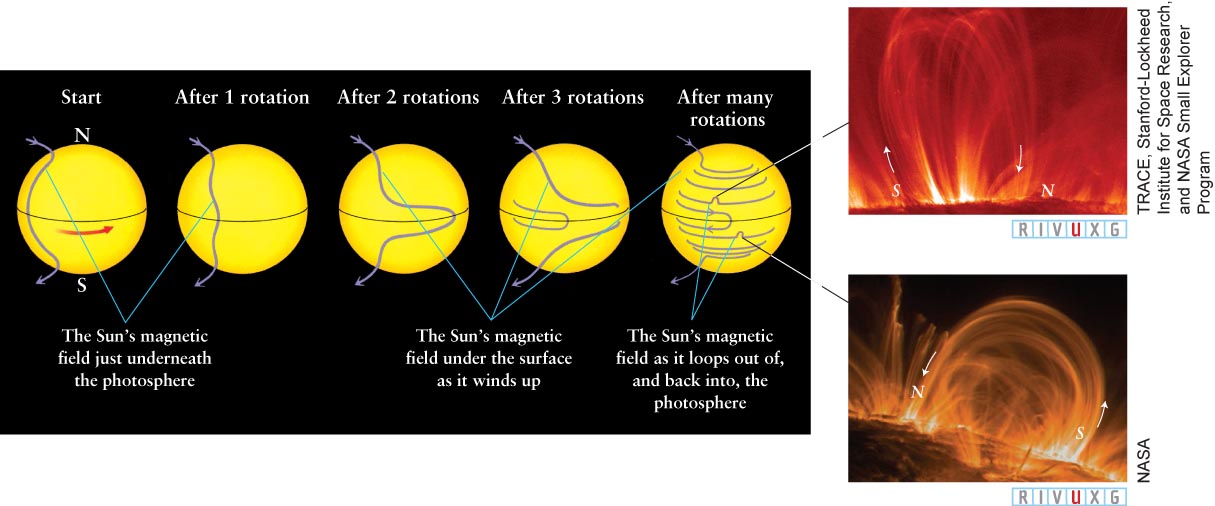
Figure 9- 13 Babcock’s Magnetic Dynamo In a plausible partial explanation for the sunspot cycle, differential rotation wraps a magnetic field around the Sun, just under its surface. Convection under the photosphere tangles the field, which becomes buoyant and rises through the photosphere, creating sunspots and sunspot groups. Insets: In each group, the sunspot that appears first as the Sun rotates (on the right side of each loop as you view them) has the same polarity as the Sun’s magnetic pole in that hemisphere (N in the upper hemisphere and S in the lower hemisphere). To understand why, note that magnetic fields make complete loops: If a north pole enters the Sun, it leads to a south pole emerging, and vice versa. Follow the magnetic field in the northern hemisphere from where it enters the Sun (near the top) in counterclockwise loops until you encounter the bump in that hemisphere. Where the field emerges in the bump is a south pole and where it reenters the Sun is a north pole, as shown. Conversely, following the fields in the southern hemisphere, starting at the south pole, you encounter the southern bump from the left, emerging as a north pole and reentering the Sun as a south pole, as drawn. The Sun’s magnetic fields are revealed by the radiation emitted from the gas they trap. These ultraviolet images show coronal loops up to 160,000 km (100,000 mi) high, with gases moving along the magnetic field lines at speeds of 100 km/s (60 mi/s).
